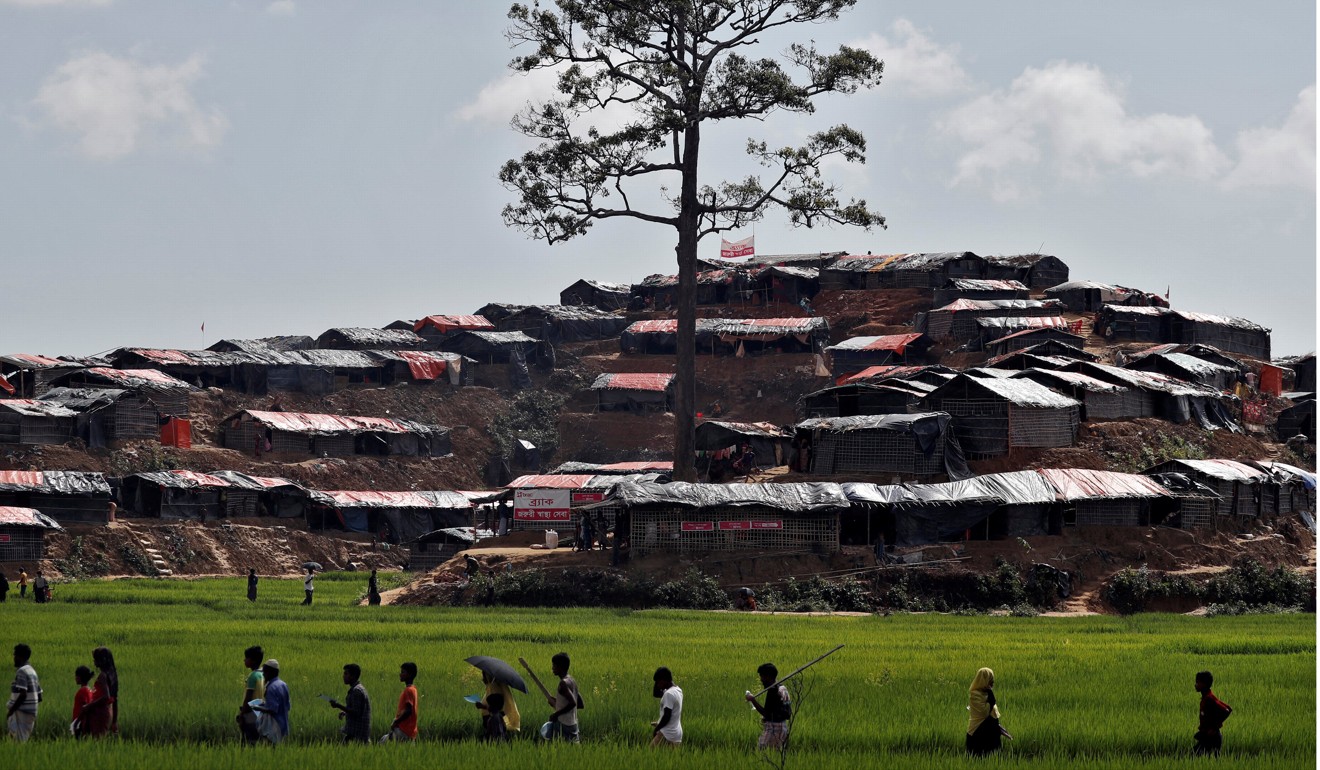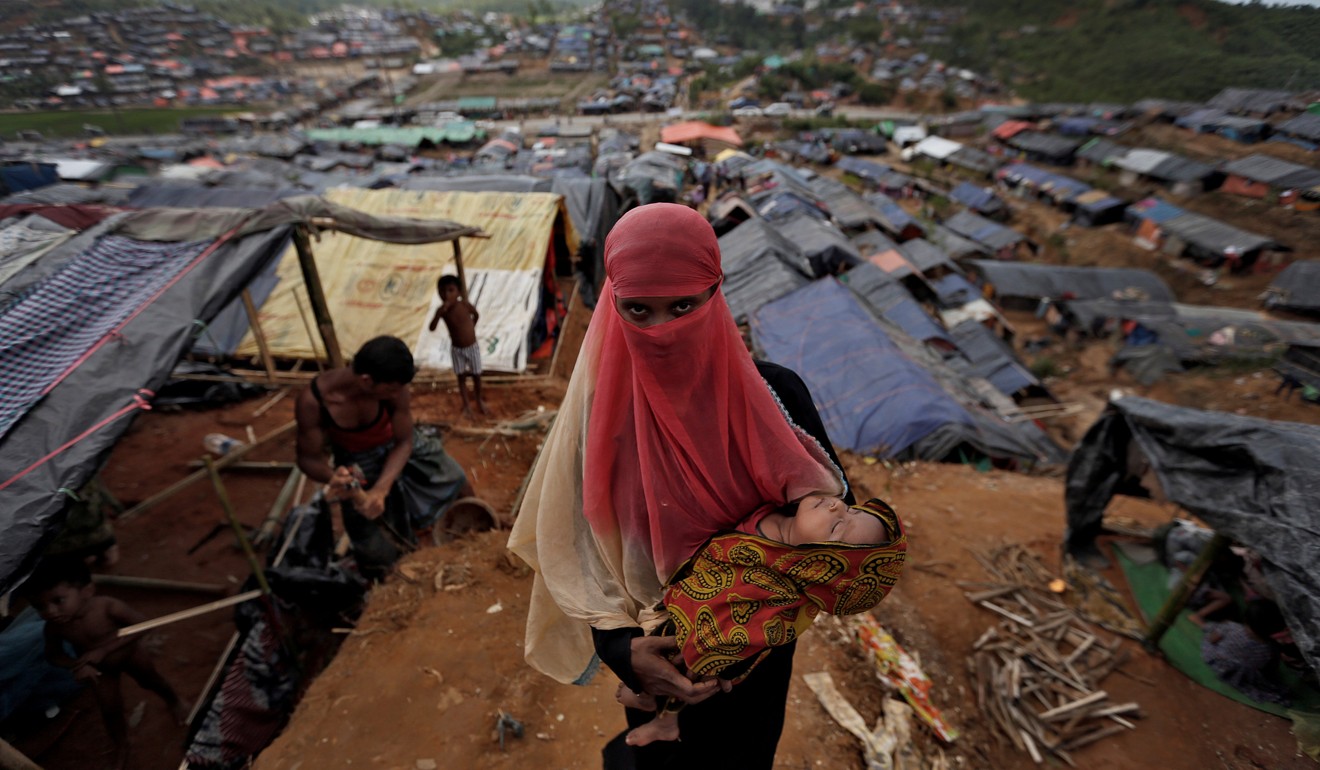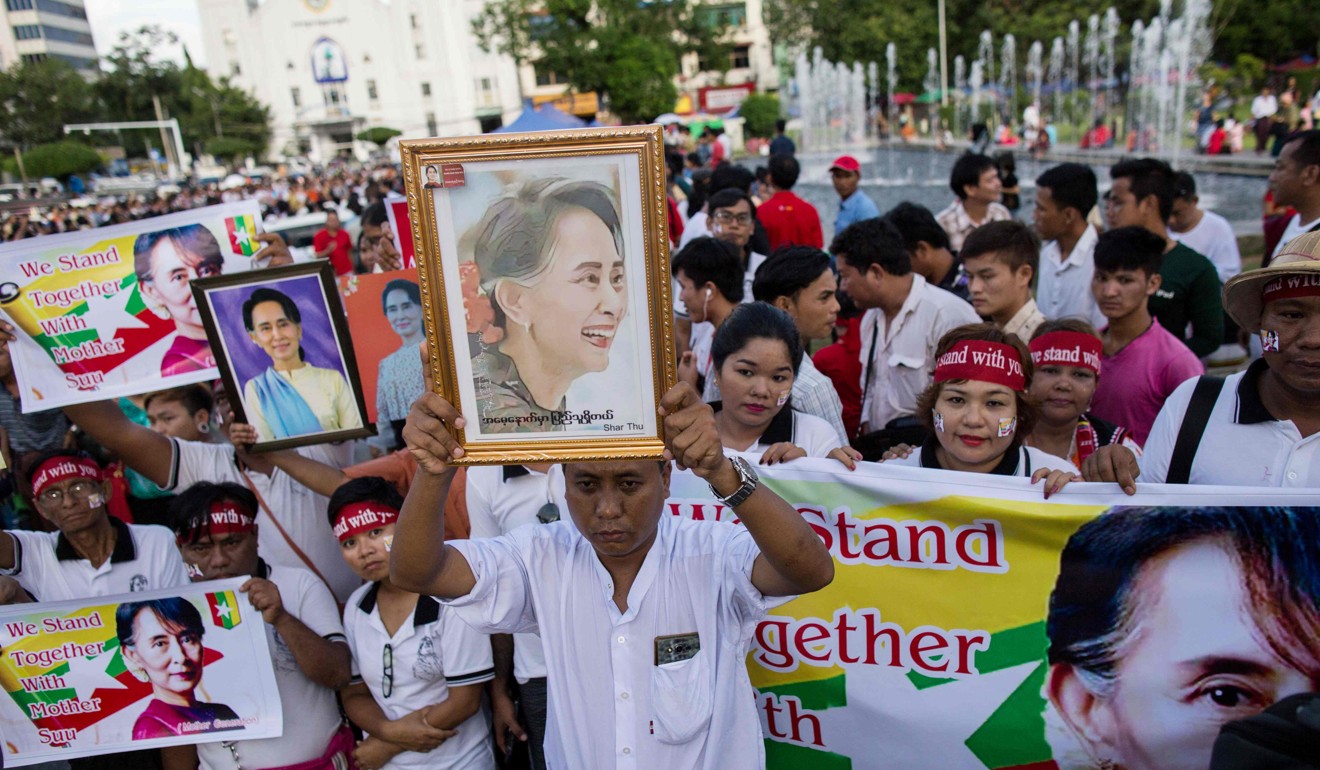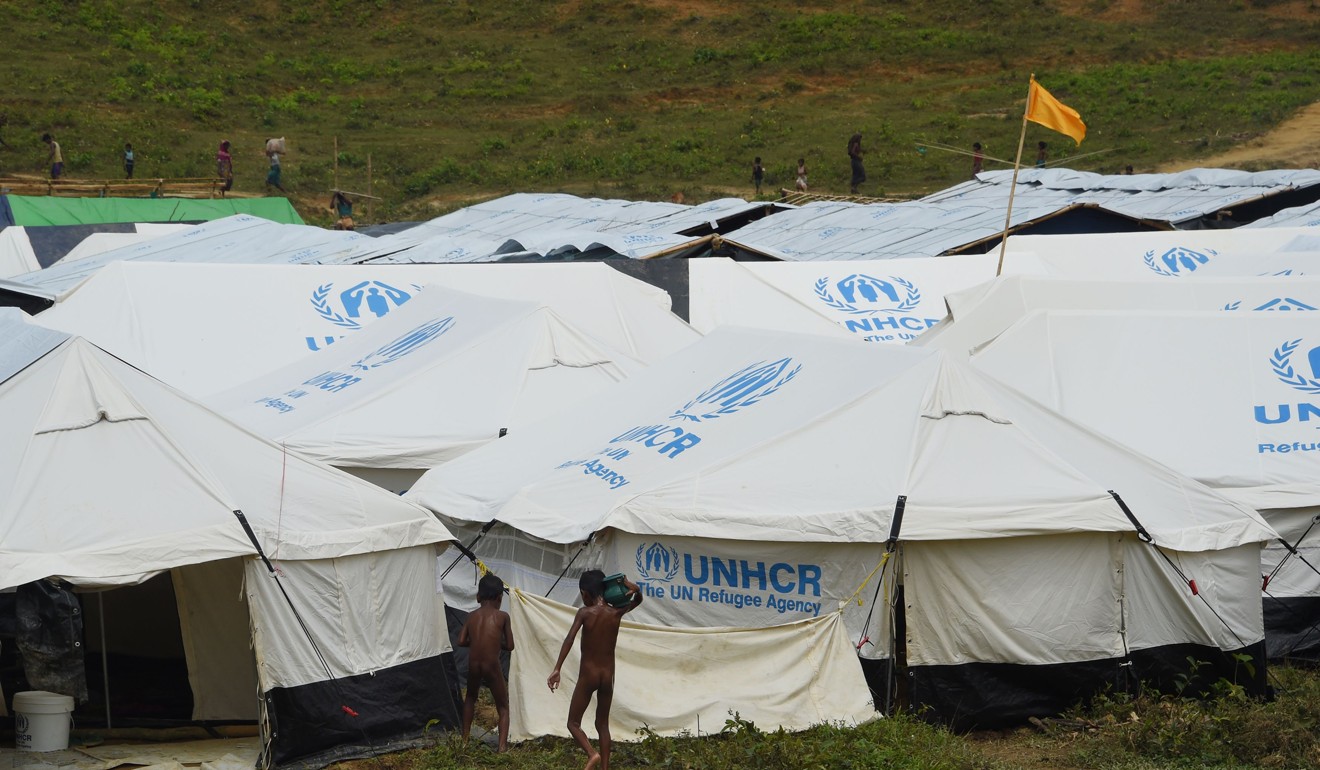
Trapped on beaches or hiding in the jungle: though numbers are falling, latest Rohingya refugees say thousands are still stranded
UN says the number of people fleeing Myanmar for Bangladesh has appeared to have dipped
The massive exodus of Rohingya Muslims fleeing Myanmar to escape persecution appears to have slowed, but a number of recent refugees to Bangladesh say there are still tens of thousands huddled near beaches or in forests waiting to escape.
Some Rohingya who have fled over the past week said Myanmar army soldiers were shooting at those trying to flee to Bangladesh. Others said thousands were stuck in Myanmar because most boatmen had already crossed to safety while soldiers burned the remaining boats.

In the first three weeks of the latest spate of violence in Myanmar’s Rakhine state, tens of thousands of Rohingya poured into Bangladesh each day, walking for days through forests or taking rickety wooden boats on the rain-swollen Naf River. Many crossed into the country via the thin sliver of the Bay of Bengal that separates Myanmar from Bangladesh.
But Associated Press journalists have seen only a handful of people enter by land or sea at a few border crossings over the past week. However, there are several crossing points on the border between the two countries where Rohingya have entered over the last month, making it impossible to verify how many people enter Bangladesh each day.

The UN High Commissioner for Refugees, Filippo Grandi, noted that the number of incoming Rohingya appeared to have dipped.
The people are scared to move. They are in a jungle near the river
One man who fled Myanmar, Syed Noor, said tens of thousands of Rohingya were waiting at border points in Myanmar desperately trying to escape. Noor and his family had fled overnight into Bangladesh.
Noor said other people from his village and other villages near the Rakhine town of Buthidaung were hiding in forests near the Naf River.
“They are stuck in one place because the Myanmar army is shooting at us,” said Noor, exhausted and groaning in pain. His excruciating journey took nine days and he said there was no food to be had for the last four days.
At first, the Myanmar army was targeting people and shooting at them and asking them to leave their villages, but now that the terrified villagers were hiding in the forests “they are firing in the air to scare us,” Noor said.
“The people are scared to move. They are in a jungle near the river,” he said.
Last week, two other men who made the crossing said similar things.
Nur Karim, who crossed on foot on Friday, said Myanmar soldiers fired on him and his family as they attempted to cross into Bangladesh. In the chaotic scene that followed, his wife and daughter were separated from him.

On Thursday, only three men had arrived at Shah Porir Dwip, the main coastal arrival point for refugees arriving in boats. The three came on a tiny wooden boat and said Myanmar soldiers were shooting at those trying to flee.
“The Myanmar army is not letting them go,” said Mohammar Amir, one of the three who got away. “But anyone who gets the chance escapes.”
Nur Islam, the imam of the main mosque at Shah Porir Dwip, said the number of boats arriving there had dropped. A few small boats were still coming, making the already risky voyage even more dangerous by arriving at night or at dawn.
Major Kazi Obaidur Reza, of Border Guards Bangladesh, said it appeared that most of the villages in Rakhine state were vacant of Rohingya Muslim residents.

The Myanmar army was repairing the broken barbed wire fencing across many parts of the border, he said, adding that the repair work suggested that there were no Rohingya Muslims left to flee.
Grandi said the agency’s access in northern Rakhine state remained limited.
“The information that we have is very patchy. But we know that there are people on the other side and under pressure and we know that there people who are displaced internally,” he said, adding that “we don’t know what will happen next. We have to be ready for large figures.”
He said the exodus of Rohingya from Myanmar to Bangladesh is “the most urgent refugee emergency in the world” right now.
“I was struck by the incredible magnitude of their needs. They need everything. They need food, they need clean water, they need shelter, they need proper health care,” Grandi said in the Bangladeshi town of Cox’s Bazar.
Myanmar’s leader, Aung San Suu Kyi, said in a nationally televised speech last week that military operations in the troubled areas had ceased a few weeks ago. She also said the “great majority” of Muslims within the conflict zone were still in their villages and that “more than 50 per cent of their villages were intact.”
But Amnesty International said on Friday that violence continued in Rakhine and that satellite and video images showed smoke rising from Muslim villages.
Rohingya have faced persecution and discrimination in Buddhist-majority Myanmar for decades and are denied citizenship, even though they have lived there for generations. The government says there is no such ethnicity as Rohingya and that they are Bengalis who illegally migrated to Myanmar from Bangladesh.

